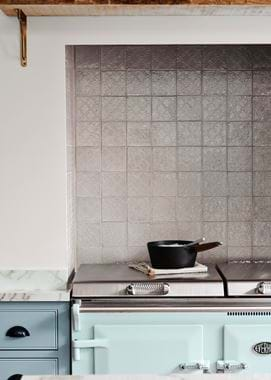Nature’s palette
Nature’s palette
The perception of colour is profoundly subjective. One person’s happy hues cue another’s aching head. And yet the colours of the natural world are universally perceived to be calming, grounding and intrinsically restorative. But what are these colours? And why do they do this?
Broadly speaking, I’d group together the many verdant greens of trees, the myriad blues of the oceans, and every shade of the earth from ochre to burnt umber under ‘nature’ colours. Of course, this covers an enormous spectrum – consider the variation between the slender silvery foliage of an olive tree and the deeply saturated hues of a fir’s prickly needles. And what of the sky? Depending on your locale, its colour could encompass everything from perky Mediterranean azures to grizzly greys. Yet, when we refer to ‘the colours of nature’ it’s always with an optimistic slant and a rosy eye. We picture the positivity of verdancy and growth, and quiet, calm and clear skies, not storms and tempest, drought or decay.
The seasons, too, affect perception. As the crispness of winter gives way to the freshness of spring before gently folding into the brightness of summer and then the glorious splendour of autumn, colours shift, subdue or bloom. However, the palette as a whole does not much alter. The reds and russets of October trees simply echo the rich tones of soil and loam from other times of the year. And the vivid skies of July often repeat in December.
But the ability of these colours to calm goes beyond mere psychological association. Blue is proven to affect us physically as well as cognitively. It makes us feel more comfortable because it lowers both pulse rate and body temperature. Green, sited in the midst of the visible spectrum, is seen more easily by our eyes than any other colour. This permits our nervous systems a degree of relaxation, engendering a sedative and calming effect. It’s not for nothing that hospital wards are often painted this colour.
However, we cannot talk of the natural world without referencing its courtesans: flowers! Capturing the essence of pure pigment in their petals, they obviously bloom in every shade. Because of this, I think there’s something unapologetically optimistic about them. Whether weed or prized begonia, they speak of perseverance despite their delicacy, and triumph over adversity. So perhaps this is the real superpower of nature’s paintbox; proof that no matter what, roots anchor, all ground can nurture and clouds pass. And the colours that remind us of this, help us to channel the same strength.
Michelle Ogundehin is internationally renowned as a thought-leader on interiors, trends, style and wellbeing. She originally trained as an architect and is the former editor-in-chief of ELLE Decoration UK. Michelle is now the head judge on the BBC’s ‘Interior Design Masters’, and the author of Happy Inside: how to harness the power of home for health and happiness, a game-changing guide to living well.














